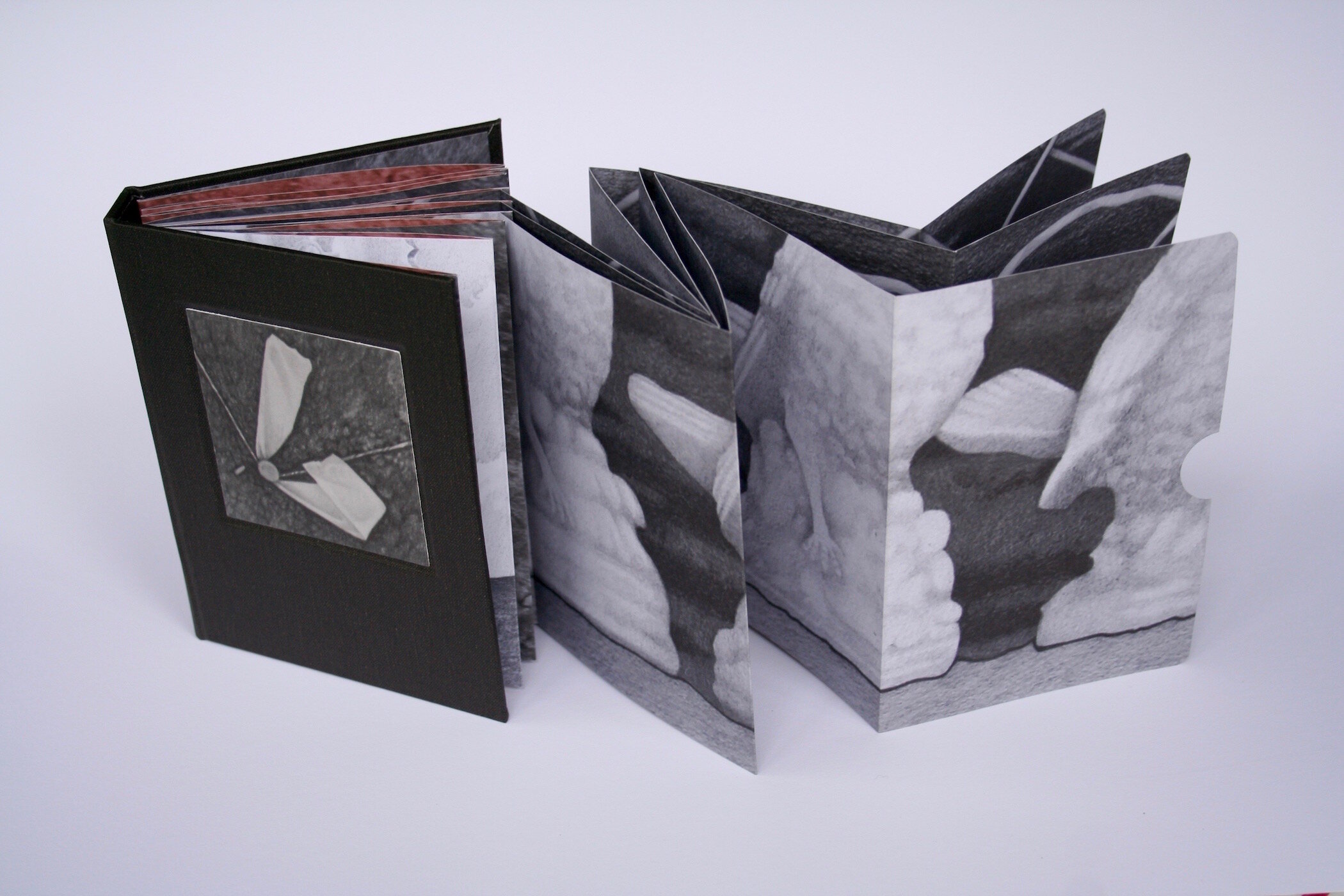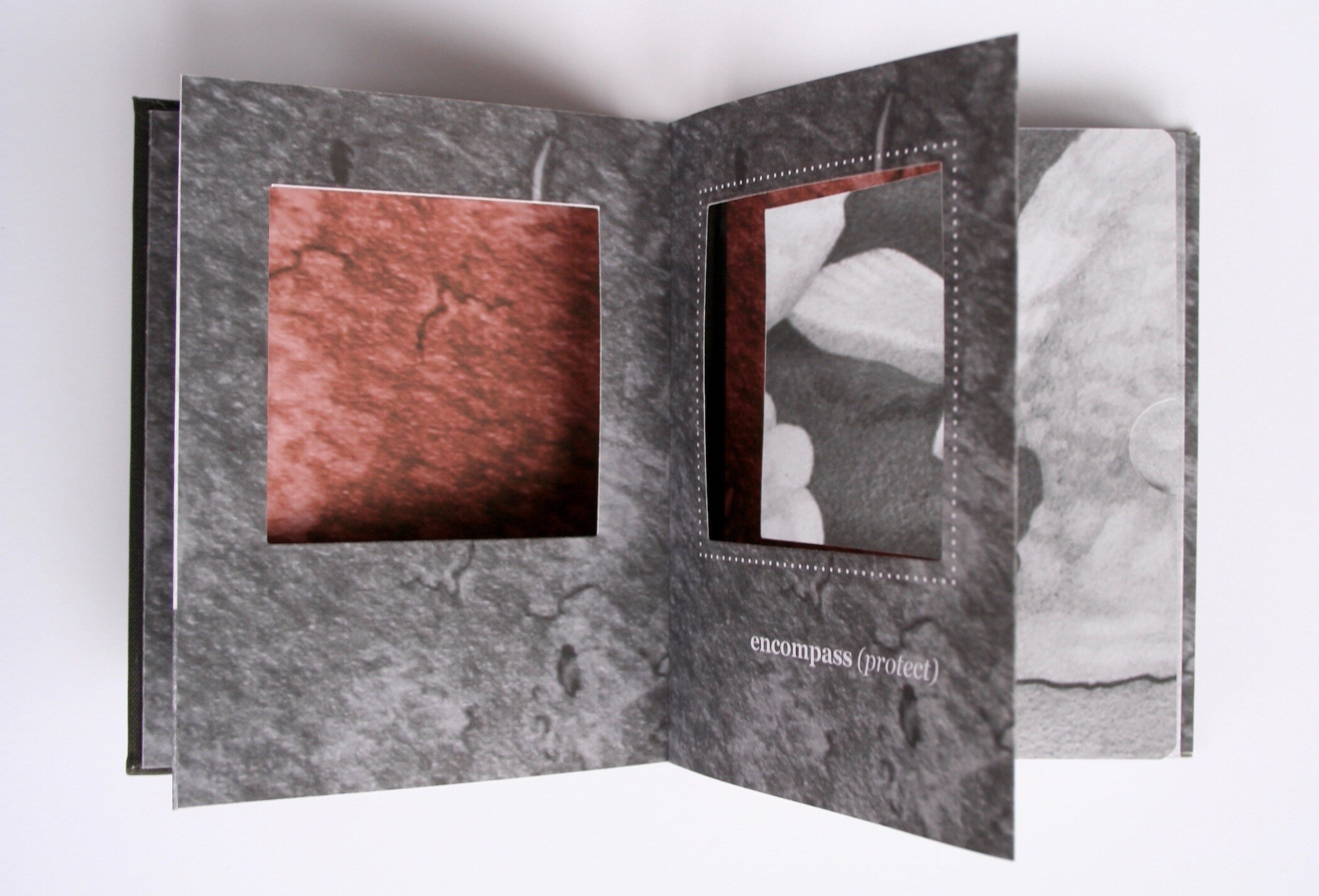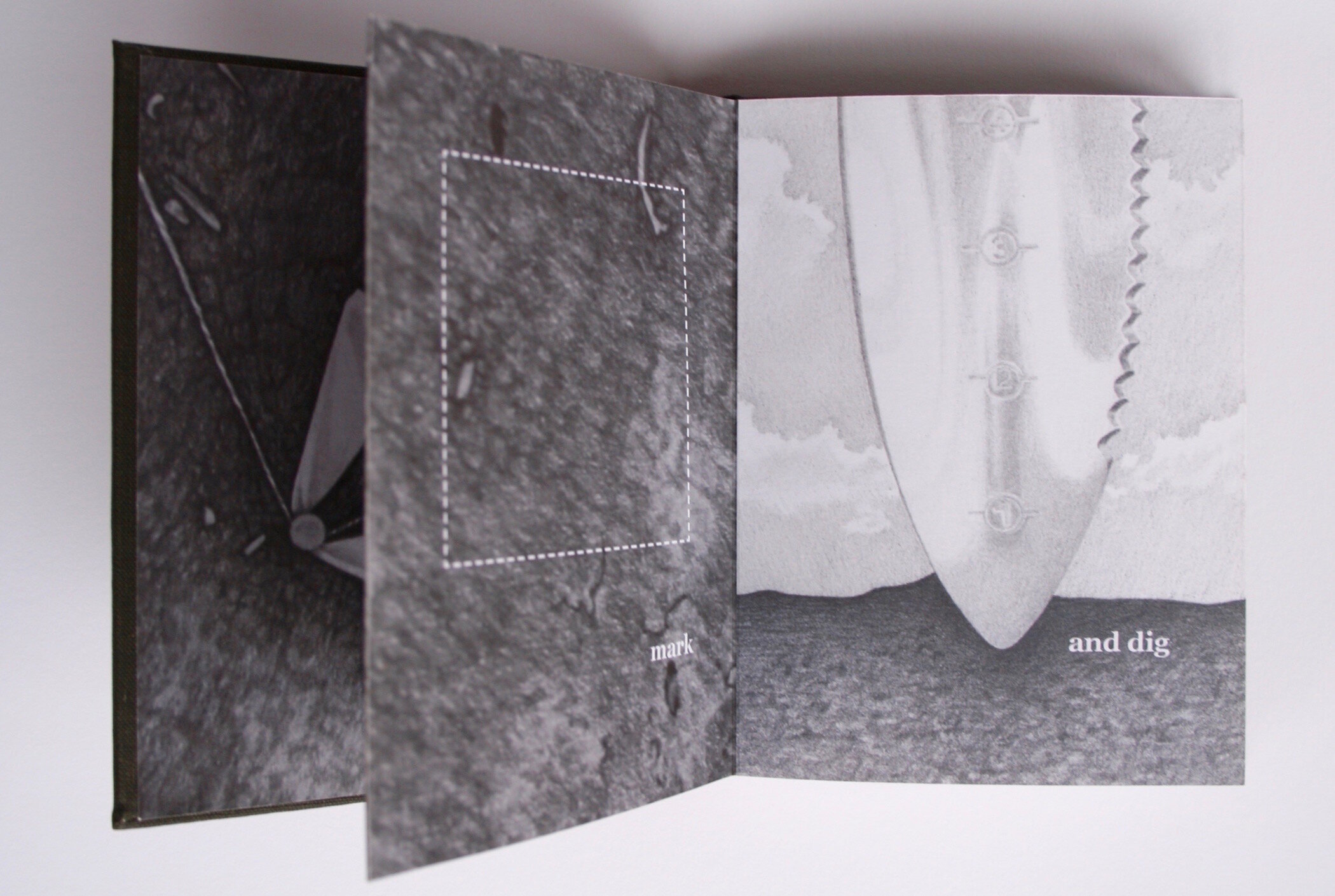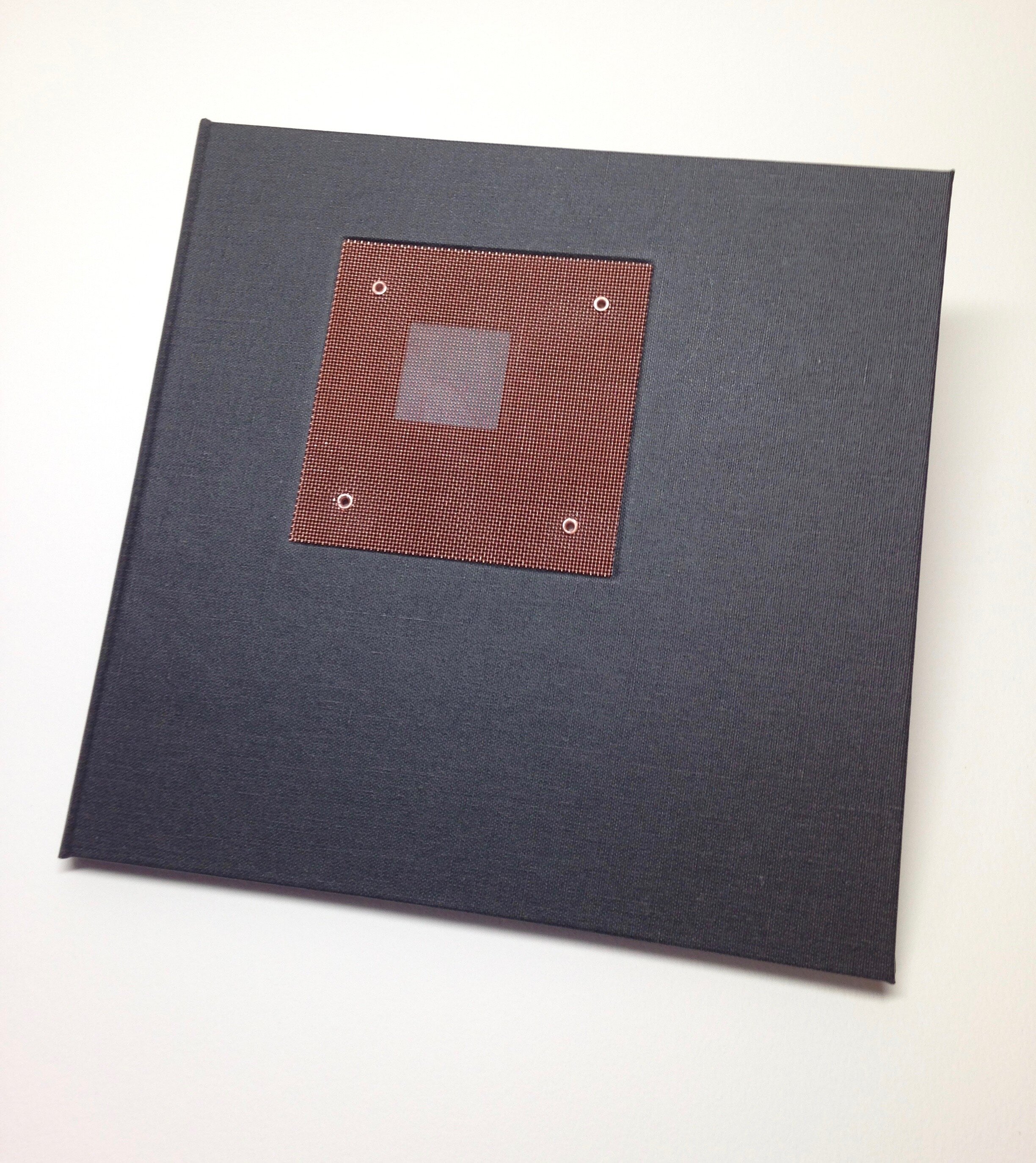
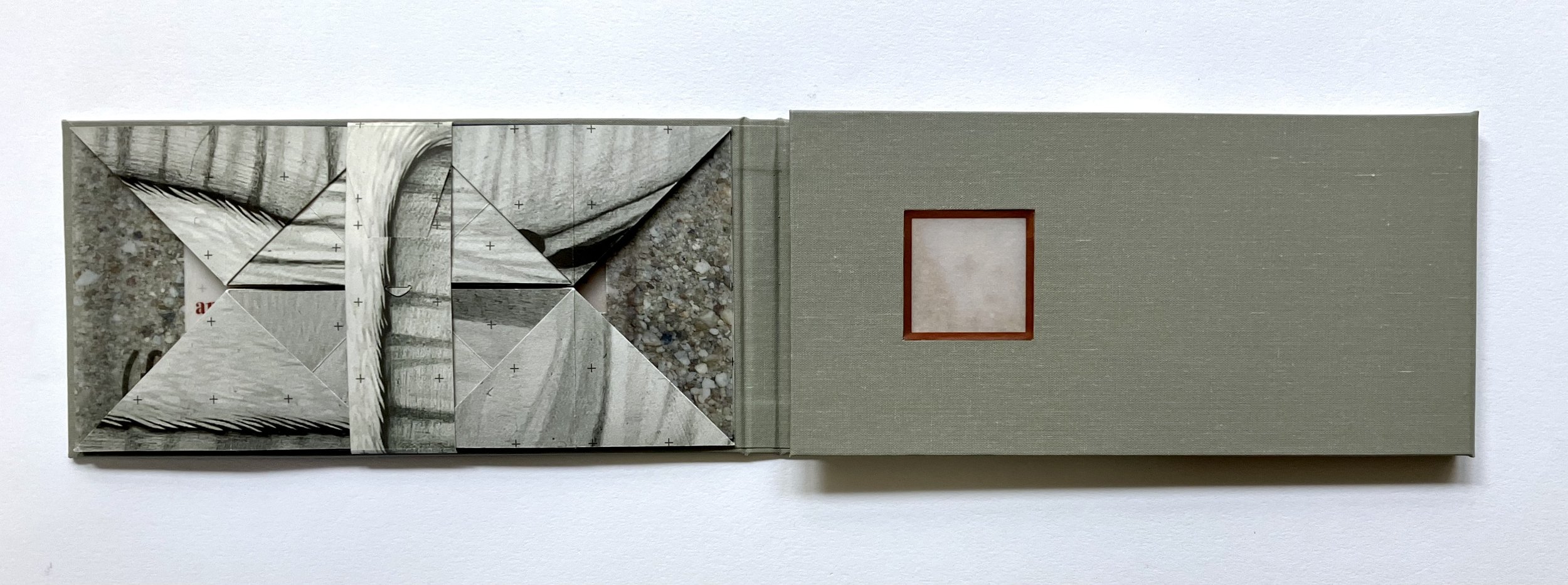


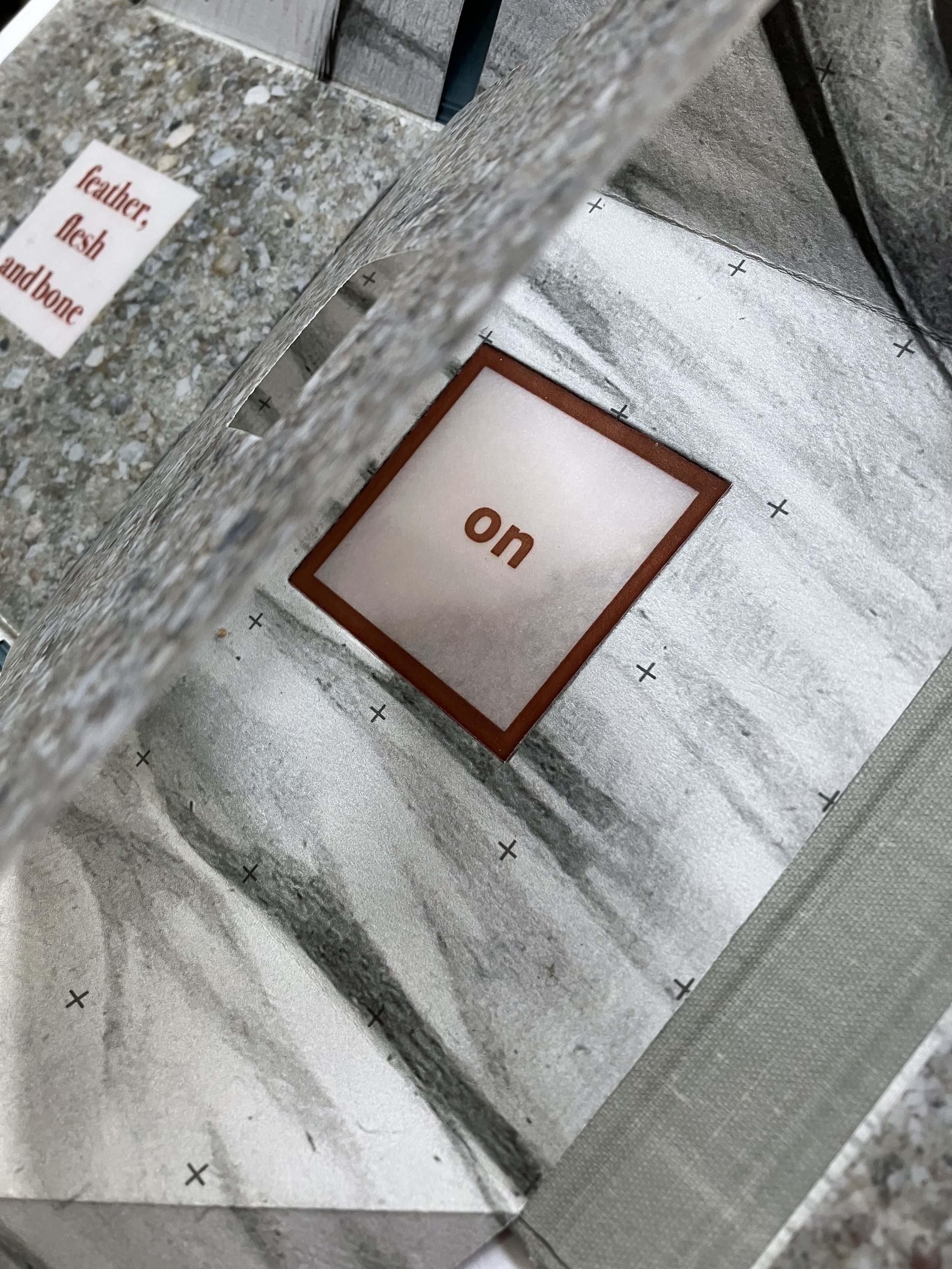
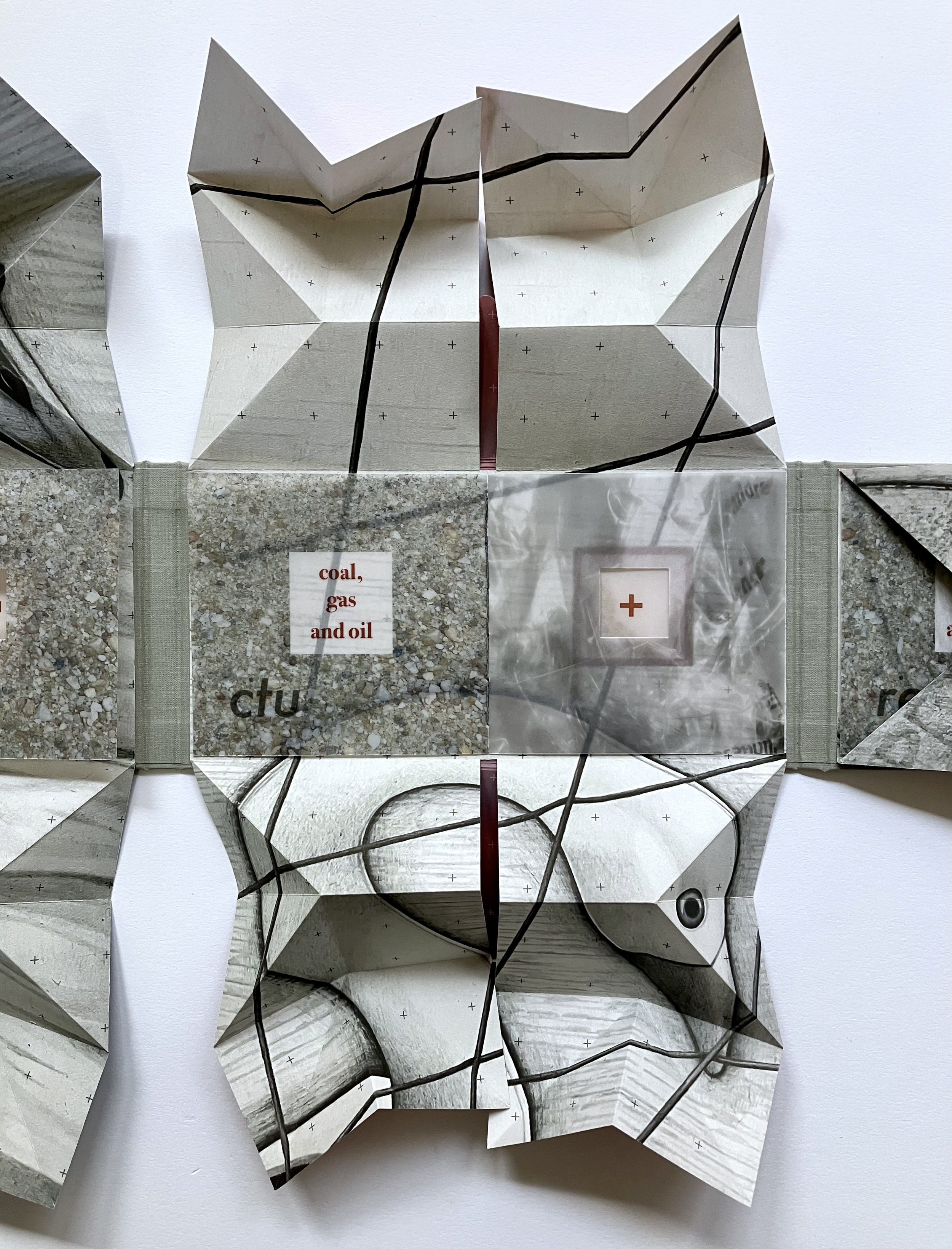
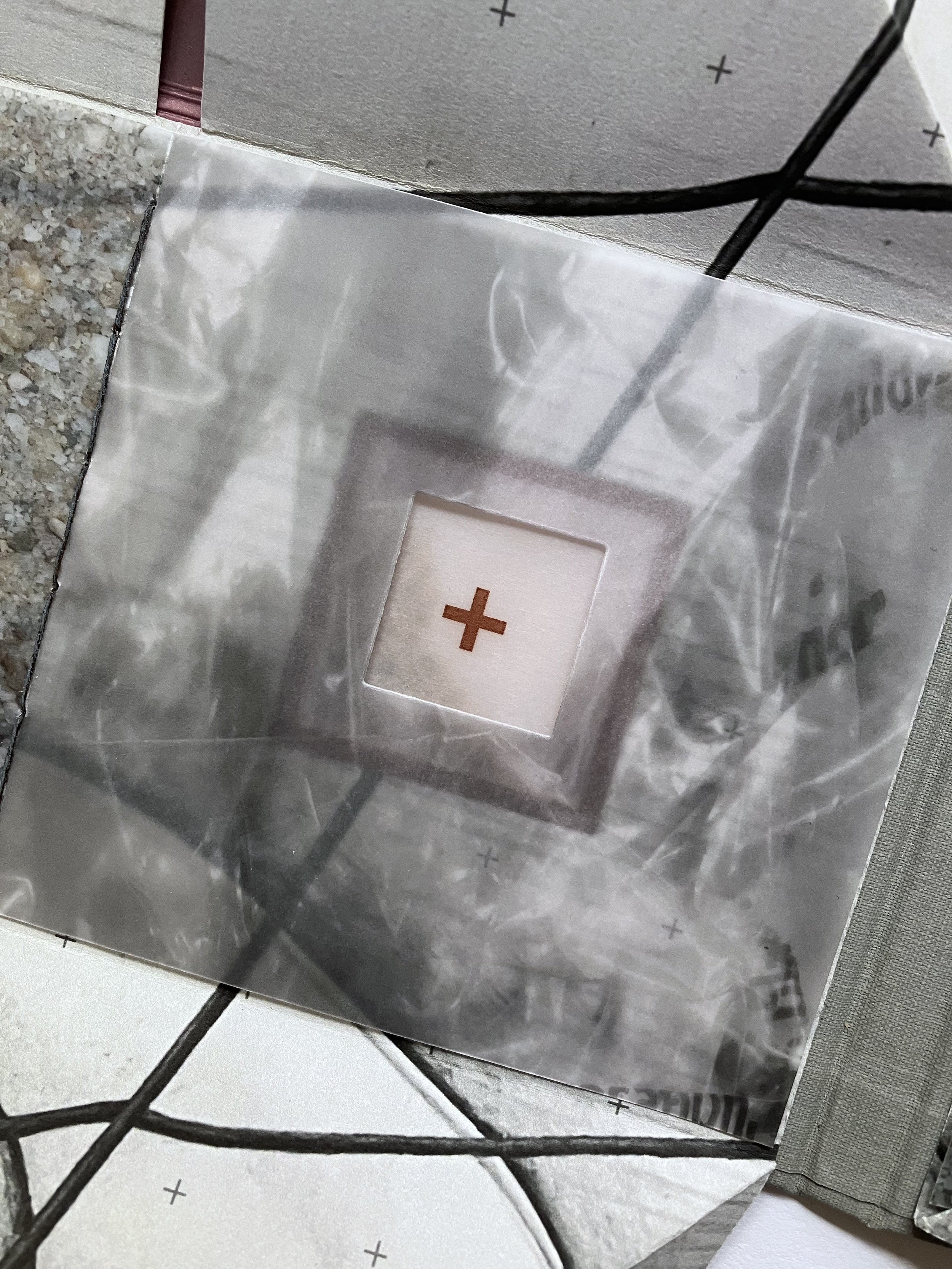

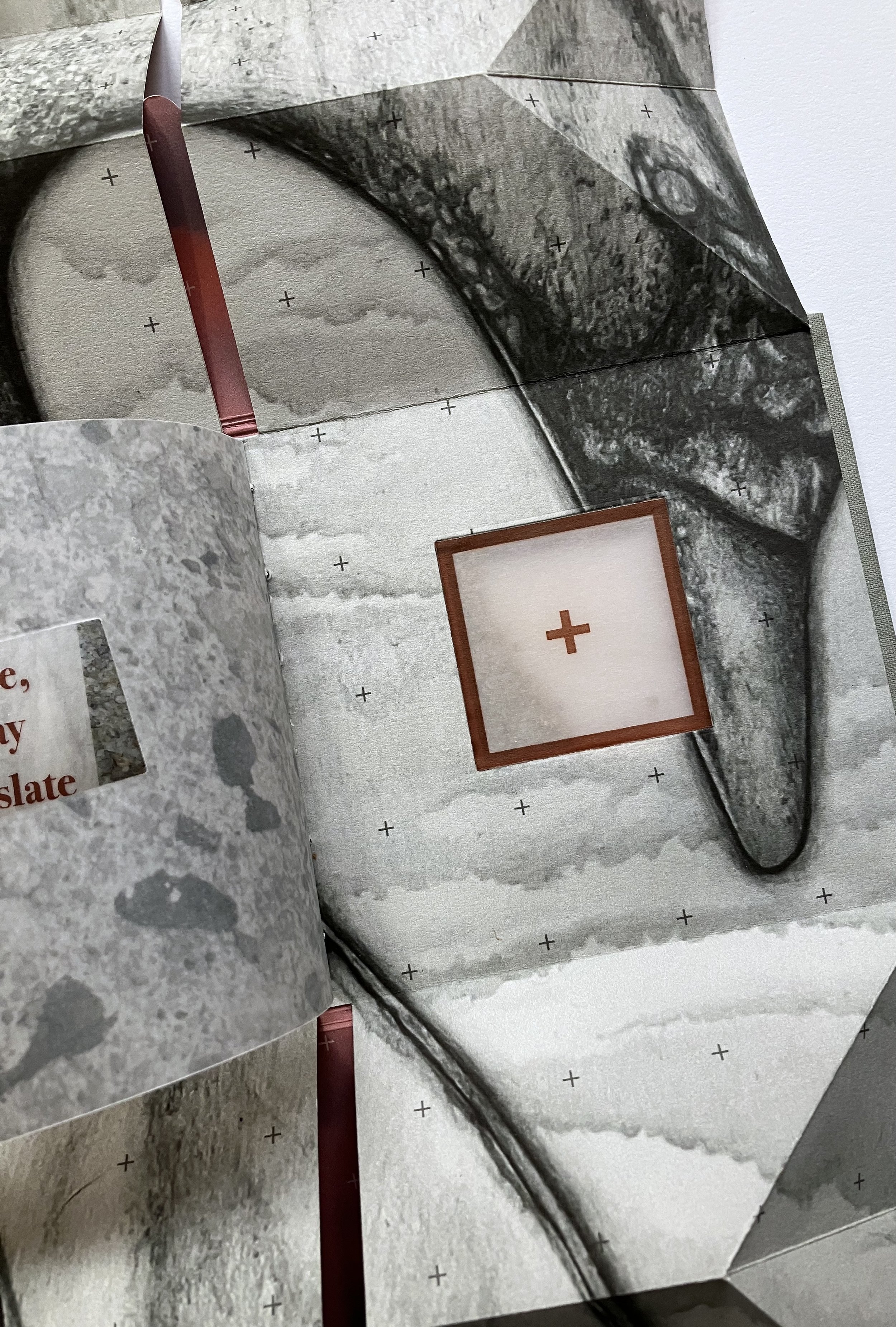
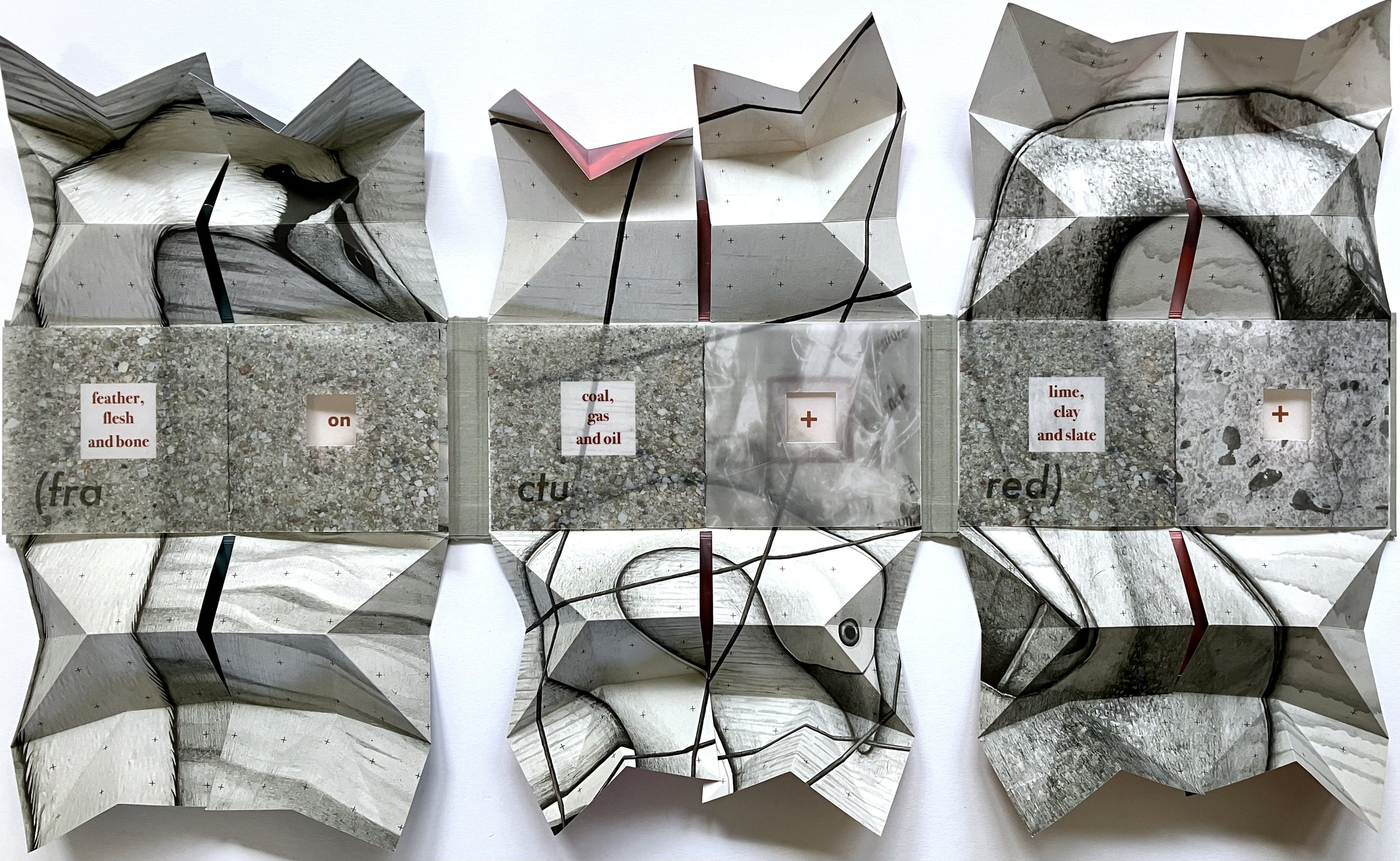
Swan (the bird) is passed through the fracturing pressures of material culture, ideas about beauty and applications of industrial resources. The book begins to address how a single word is used, in multiple contexts, impacts how value is assigned.
How a single word is used may redefine its meaning by minimizing and flattening the truth, ultimately undermining and weakening its very essence. One swan is real, comprised of feather, flesh and bone with feet firmly on sand, backed by the clear night sky. Two are manufactured materials, comprised of various compounds including the addition of sand, (daily mined from the banks of rivers and lakes), backed by a beautiful but polluted sky.
“swan (fractured)” is a trifold, case bound book, comprised of digital images of drawings of swans and photographs of sand, plastic, concrete and the sky. The cover includes the debossed word “swan” and three translucent pockets containing sand. Dimensions of the closed book, 4 1/2” tall x 9 1/4” long x 5/8” deep. Fully open, the book measures 17” tall x 28” long x 3” deep.






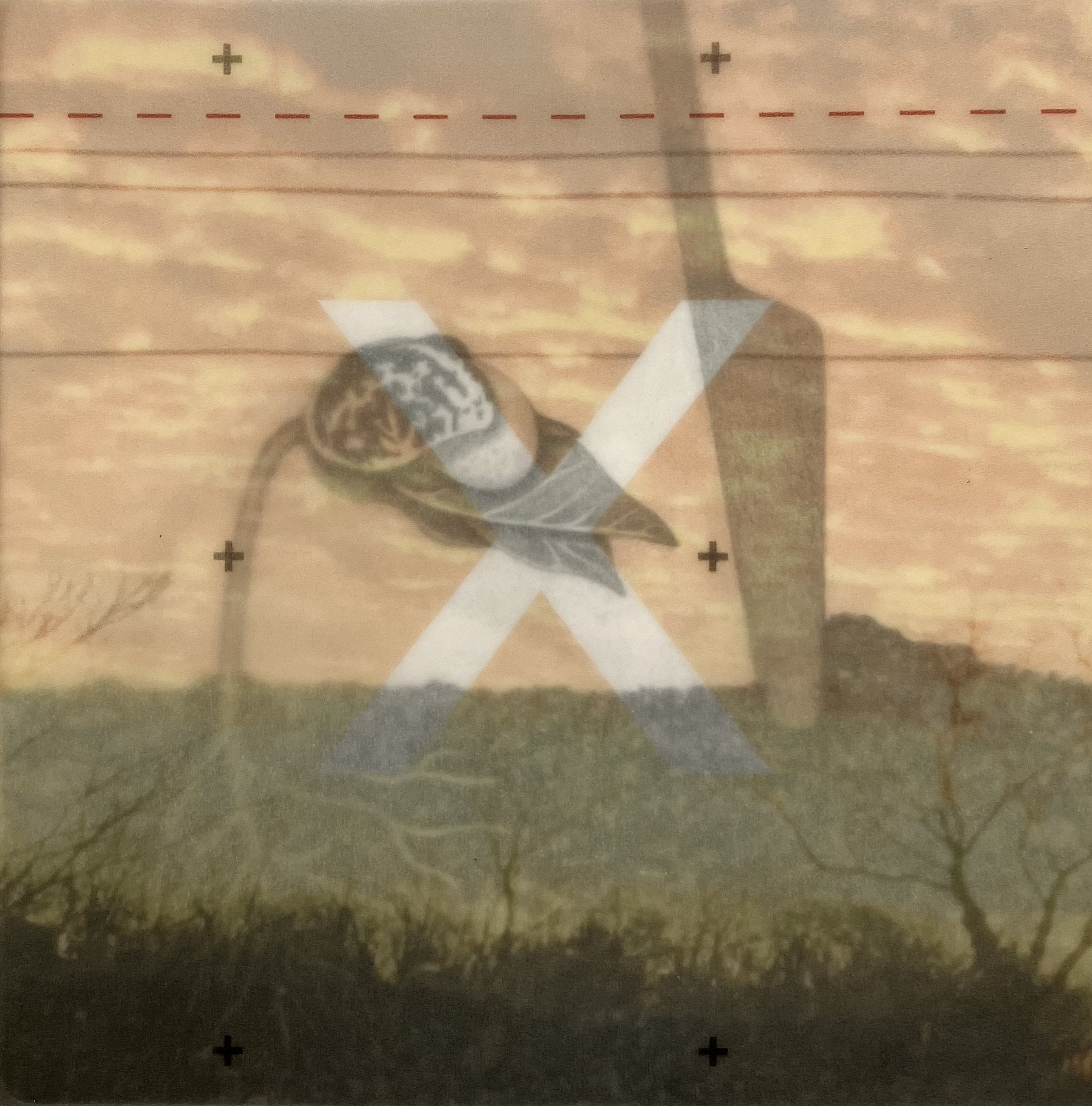





A box holds eight, wrapped drawings that can be arranged to form a game of tic, tac, toe, but with the center of the nine square grid missing. The missing center underscores the futility of a game perpetually resulting in a draw. In addition, the inside of the box and missing center of the game is occupied by fundamental trauma, rendering it unusable in play.
Each, full-scale drawing in the game represents a carefully constructed understanding of what comprises Eden. Each figure is wrapped in ill-fitting systems of organization, is aflame with the passing of time and may be rearranged in response to changing conditions.
“rearranging Eden (tic, tac, toe)” is constructed from eight graphite drawings on Arches hot press paper, eight vellum sleeves with digitally printed photograph and text. The clam shell box is assembled from archival book board, book cloth, vellum inlay, lightening photograph (courtesy of Diana Hale), brass screen, grid holding a square of red glass. Dimensions of the closed box, 5 1/8” wide, 5 3/8” tall and 1 1/4” deep. Open dimensions vary.












“approximate Eden" is organized around three square gardens, infused with and constructed through work, the expression of identity and the pursuit of sustenance. Each of the three gardens contain 1:1 scaled references. In the first garden, a boundary protects a bean seed. Corn marks the center of the second and the third includes a threshold through paper and board, connecting the internal space of the garden with our immediate surroundings. Along one edge, the three square gardens are adjacent to shelter with the night sky above. These ancient spatial arrangements, images of heritage plant varieties and expressions of work, identity and sustenance recombine to form a sacred place, "approximate Eden."
eden = fruitful, well watered
garden = gher (enclosed) + eden
paradise = paradeisos (enclosed park)
“approximate Eden” is a limited edition of ten case bound books stored within a slip case, constructed with archival book board, cloth, digital prints of graphite drawings and a photograph of the night sky. Graphite drawings, book and case construction; night sky photograph, NASA open sourced photograph

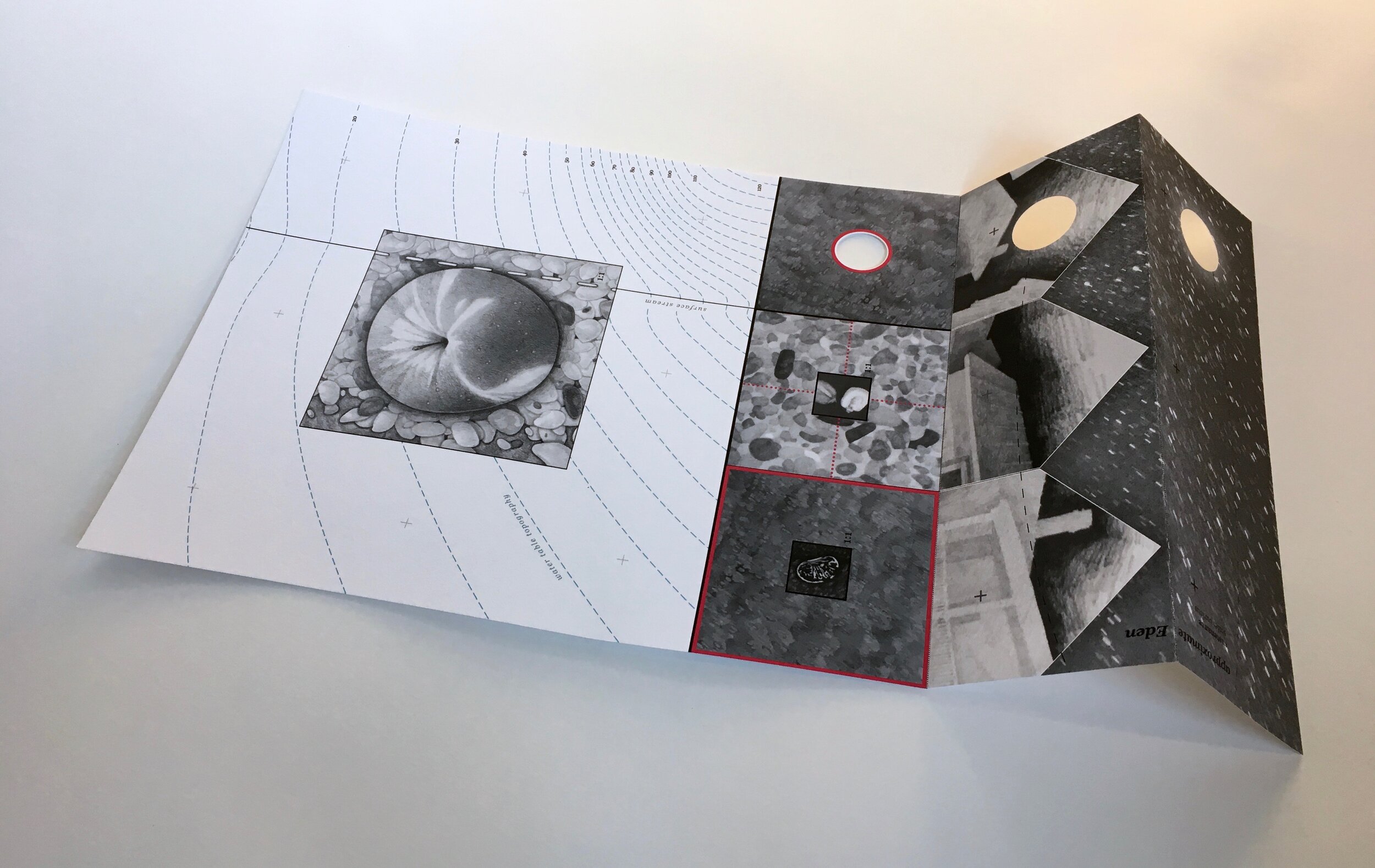
In the orchard, apples grow and sometimes fall and bruise before they are harvested. The fruit is fed by a surface stream channeled from the gardens, flowing in unison with sub-surface water moving through deep hidden landforms. Shelter holds one side of the gardens, providing safety and privacy beneath the night sky. Vision and inspiration begin with the moon, are held under shelter and nurtured within the internal space of a garden. An overall réseau provides a reference for measuring the size of objects, uncovering any distortions and allows us to understand the relationship between the physical patterning of place and sustenance.
“map of approximate Eden, sustenance” is a limited edition of sixty five maps, produced in response to the 2019 Virginia Center for the Book Members Collaborative Project. Each map is printed on acid free, 100% cotton base paper. The imagery is sourced from photographs of my graphite drawings, digitally combined and printed with an archival ink jet printer. The night sky photograph fragment, National Aeronautics and Space Administration, public domain. The map includes three circular die cut openings. Twelfth annual international exhibition, Drawing Discourse, at the University of North Carolina, Asheville, 2021 included "map of approximate Eden, sustenance" from my series of drawings, books and maps, "approximate Eden", the work spanning 2018, 2019 and 2020.
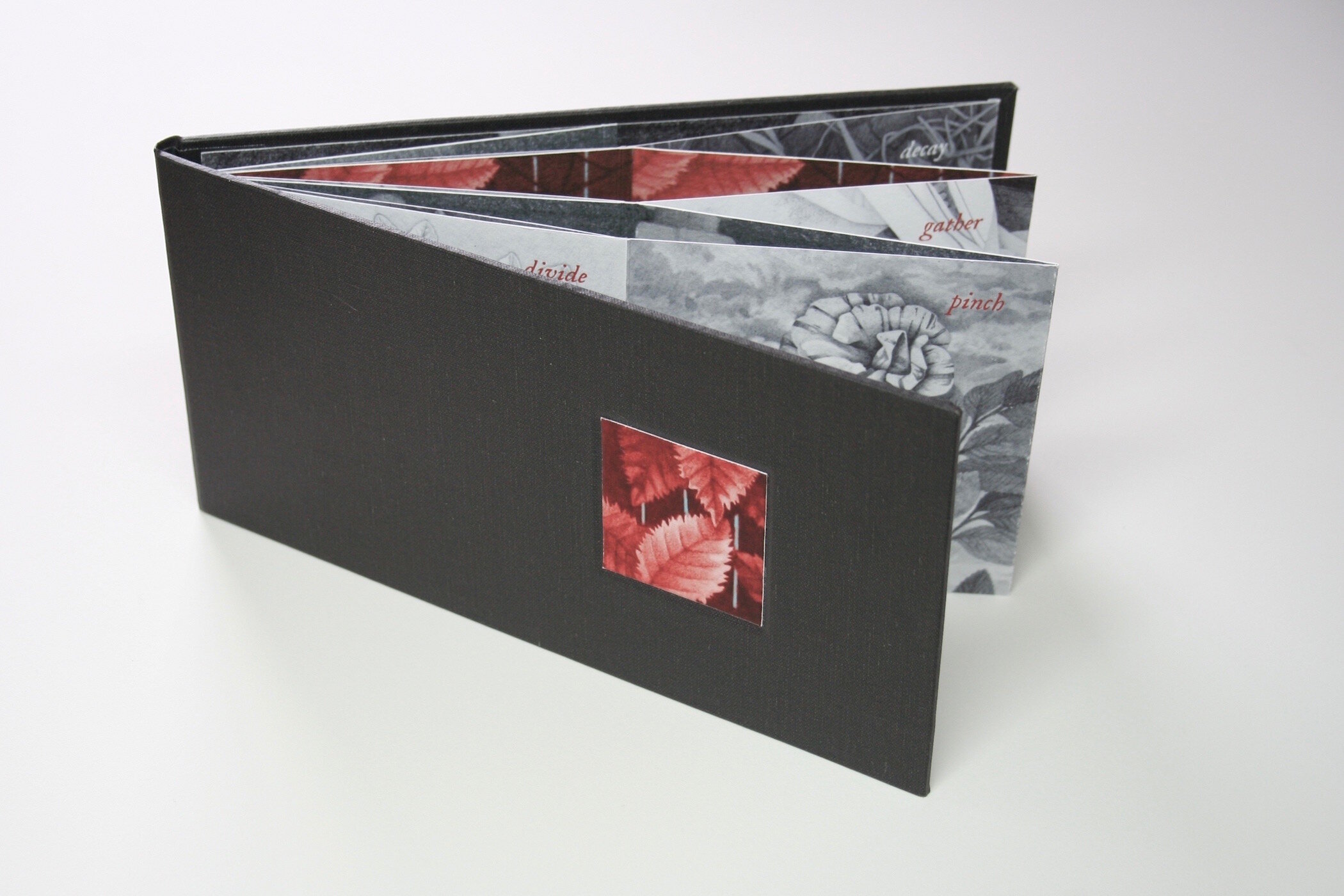
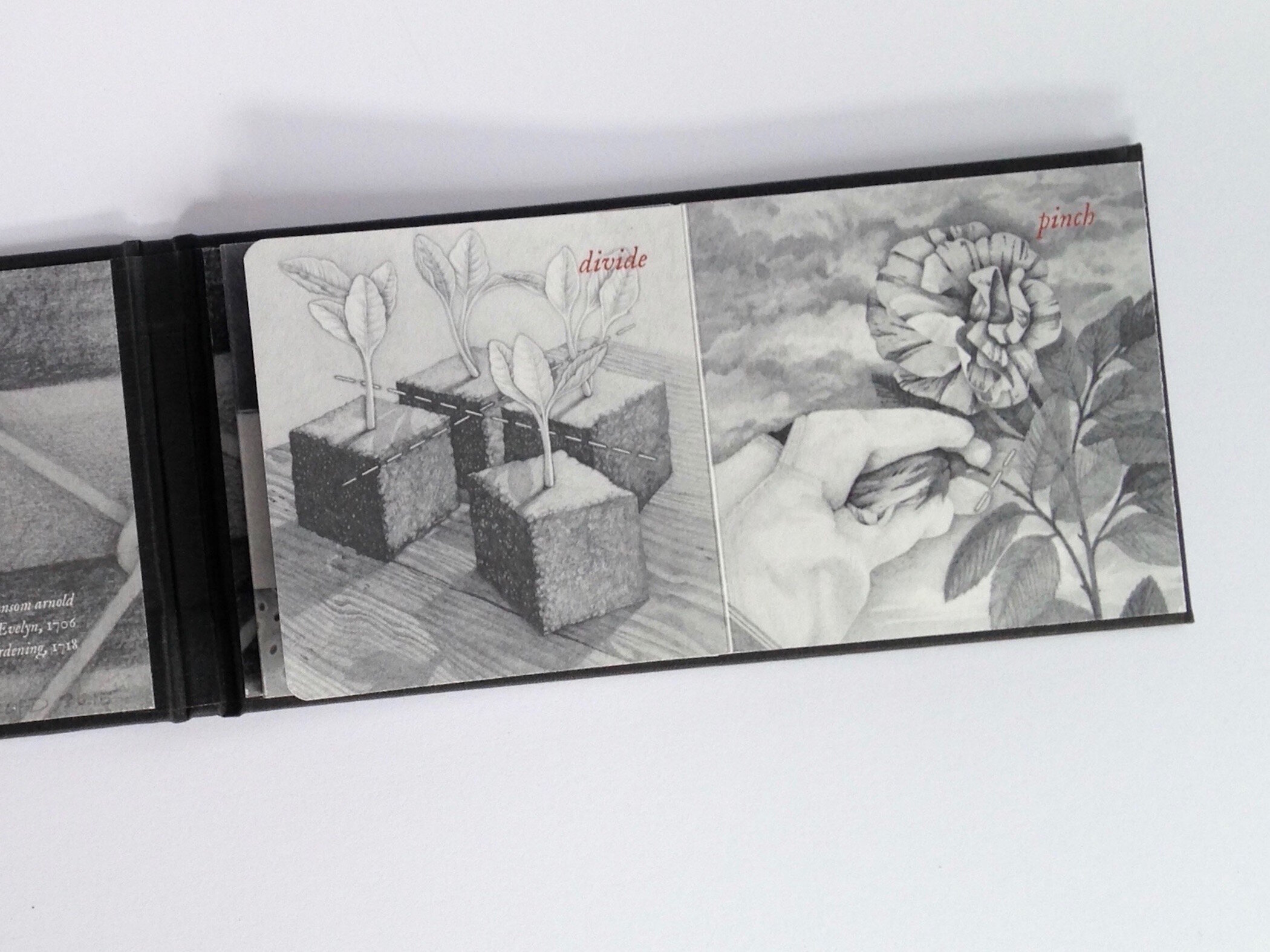
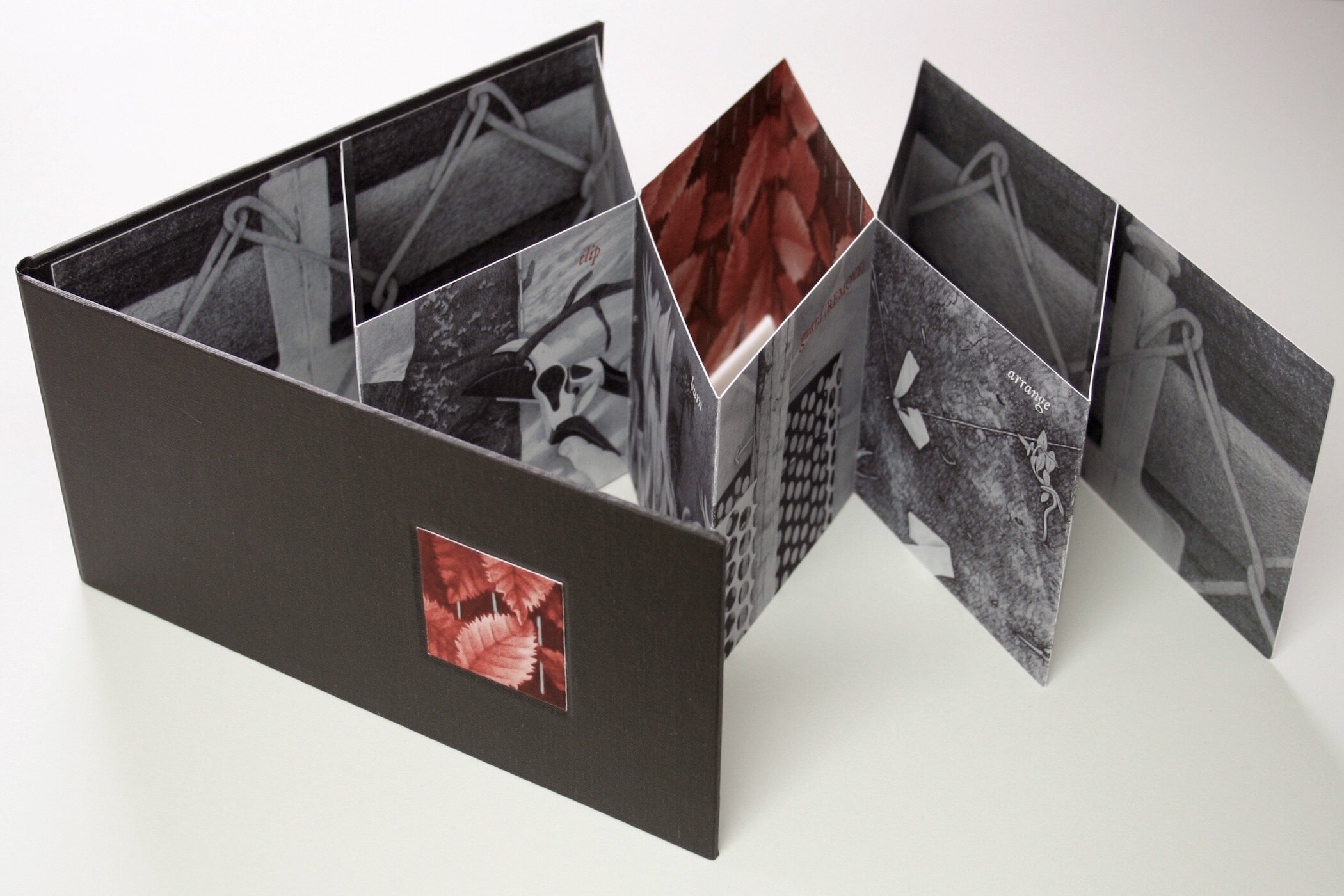
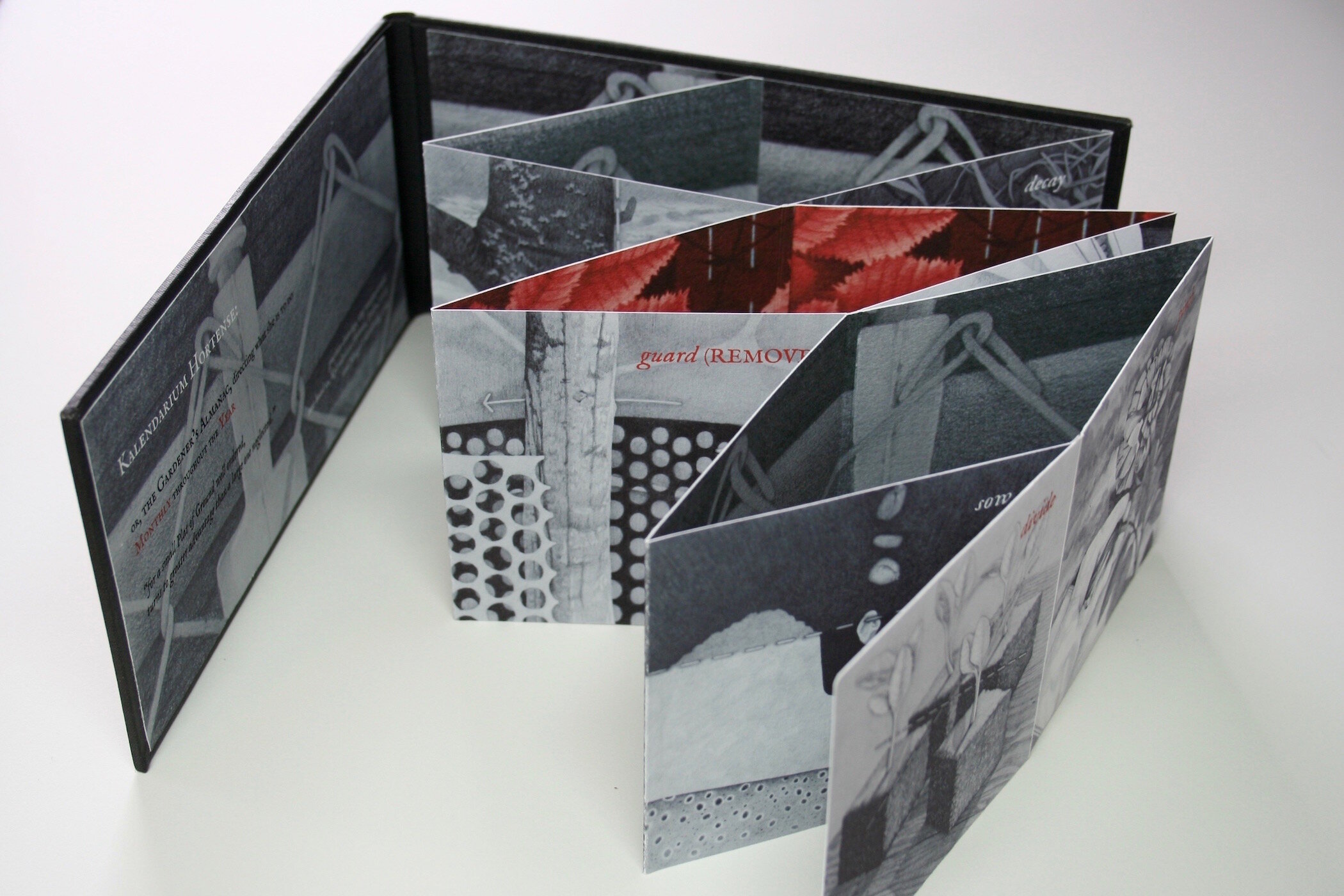

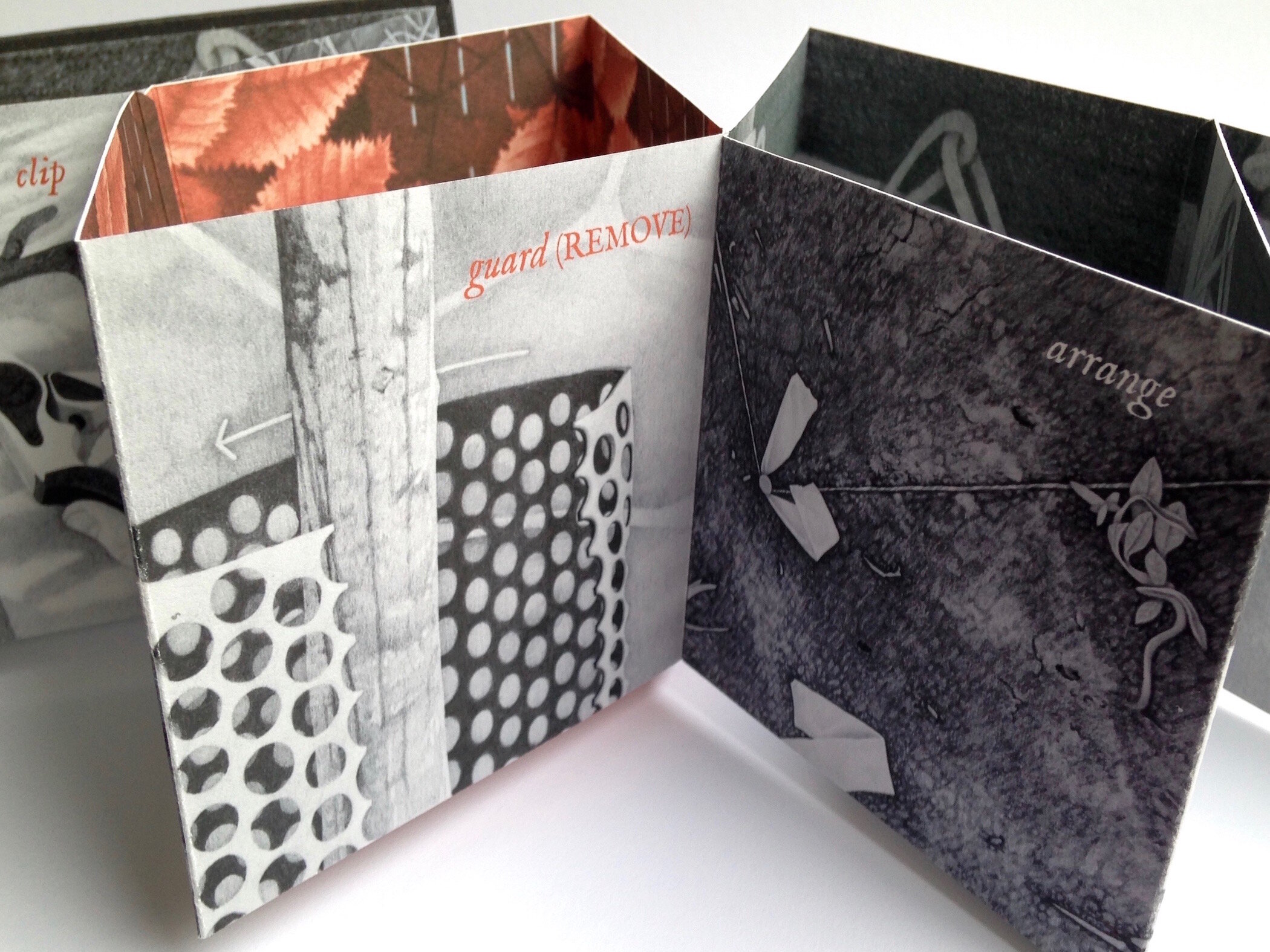

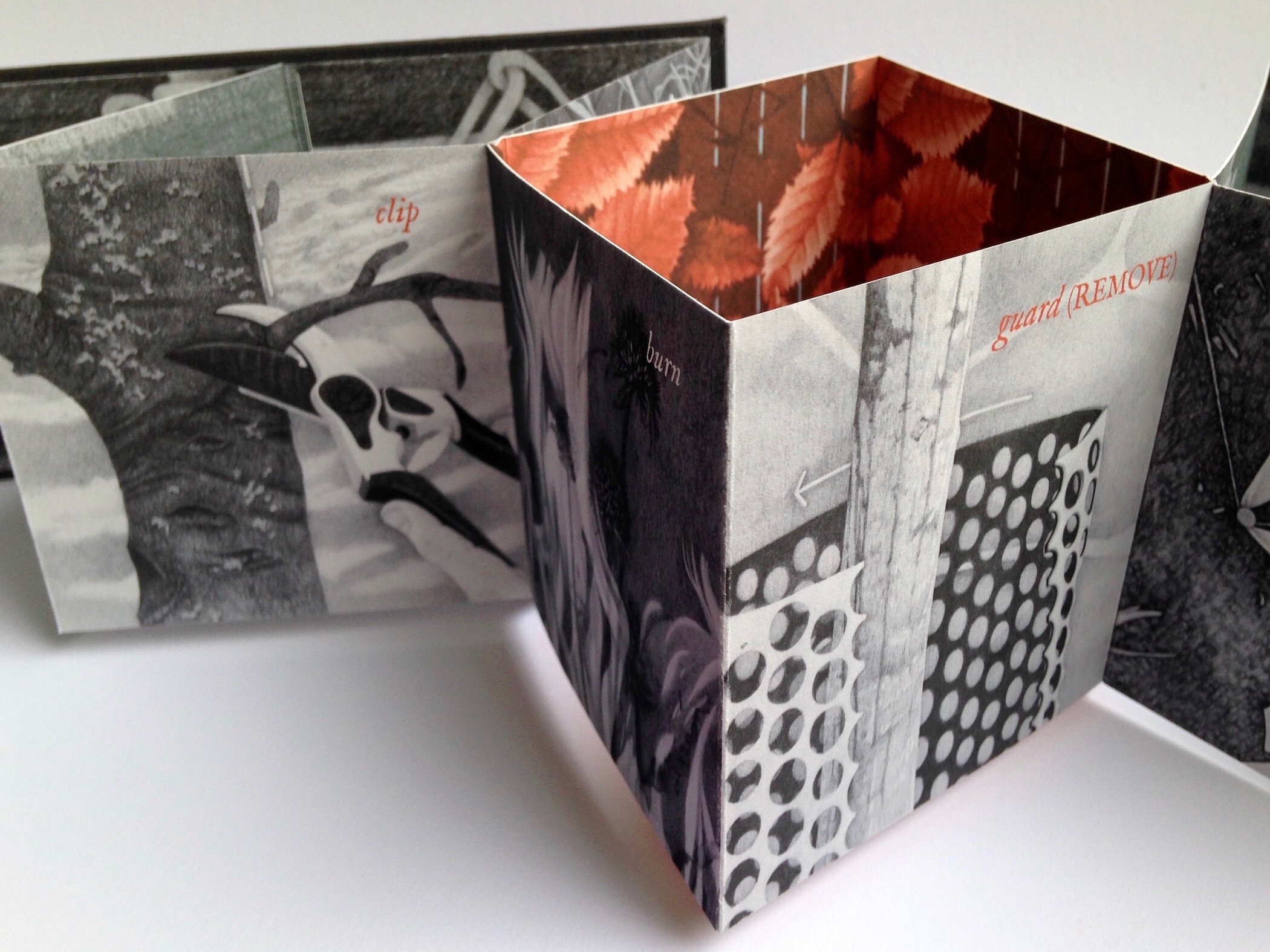
In "Kalendarium Hortense", soil, wood, seed and sky are configured and arranged, describing actions necessary to manage seasonal change and establish boundaries, building sanctuary in the face of sudden disruption. Simultaneously abstract and figurative, garden, gardener and gardening are compressed in a conversation of change, disruption and renewal. The book is designed to create three, internal spaces within the pages: the surface of the central space is continuously covered with a drawing of wooden fencing and hedging (highlighted with color), with the two adjacent spaces configured with the images of chain link fencing. "Kalendarium Hortense"is an edition of 25 giclée, case bound, artist books.
"Kalendarium Hortense" was exhibited in the books arts exhibit BUILT at 23 Sandy Gallery in Portland, Oregon in the spring of 2017 and is included in the Book and Paper Arts Collection at the University of Washington, Seattle and the Artist Book Collection in Special Collections at James Madison University, Harrisonburg, Virginia.
PAST PROJECTS
These collected books explore the relationship between words, imagery, and expressions of time and movement. Pursuing the relationship between ideas and the physical configuration of materials, within a discrete space, is a fundamental thread in Amy's work. This thread is expressed in the three dimensional space of site and garden design, the two dimensional space of drawings, and the sequenced patterning of the page. Within this collection of artist's books, three dimensional spaces become compressed and abstracted; time is expressed as each book is experienced, page by page and fold by fold.

